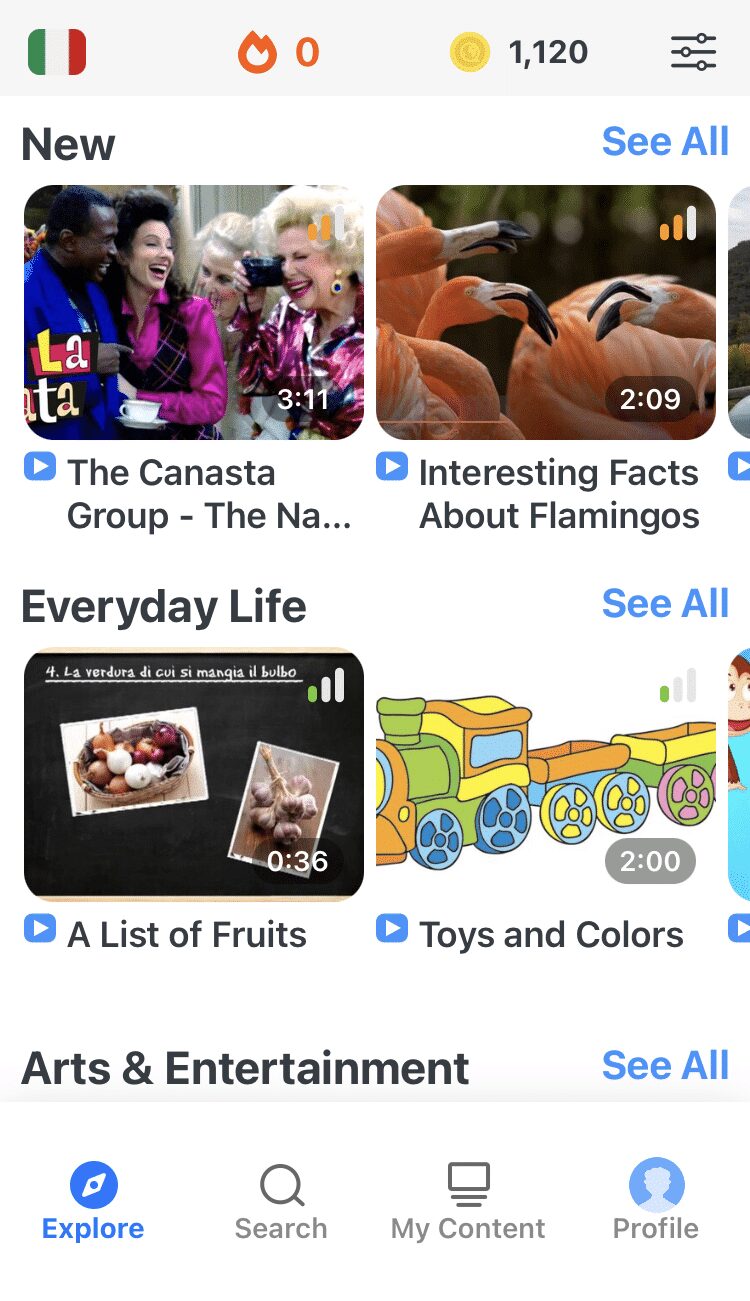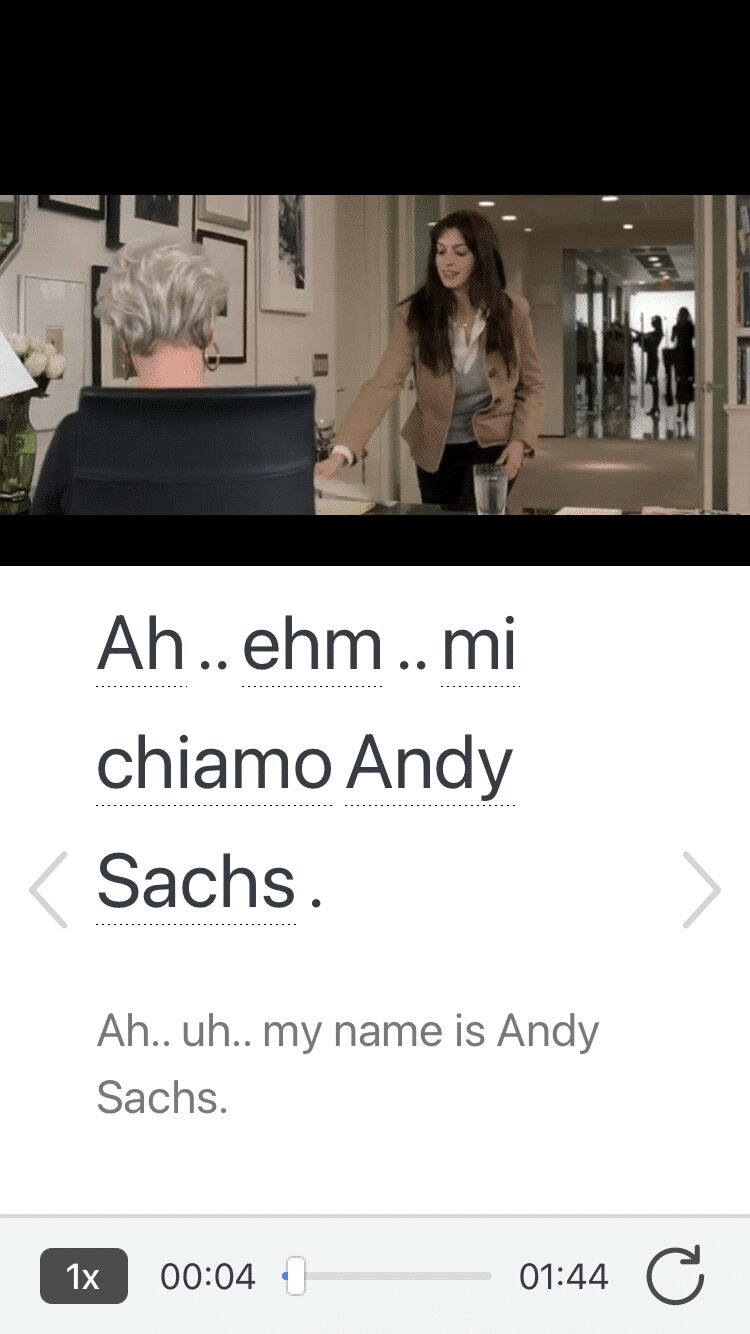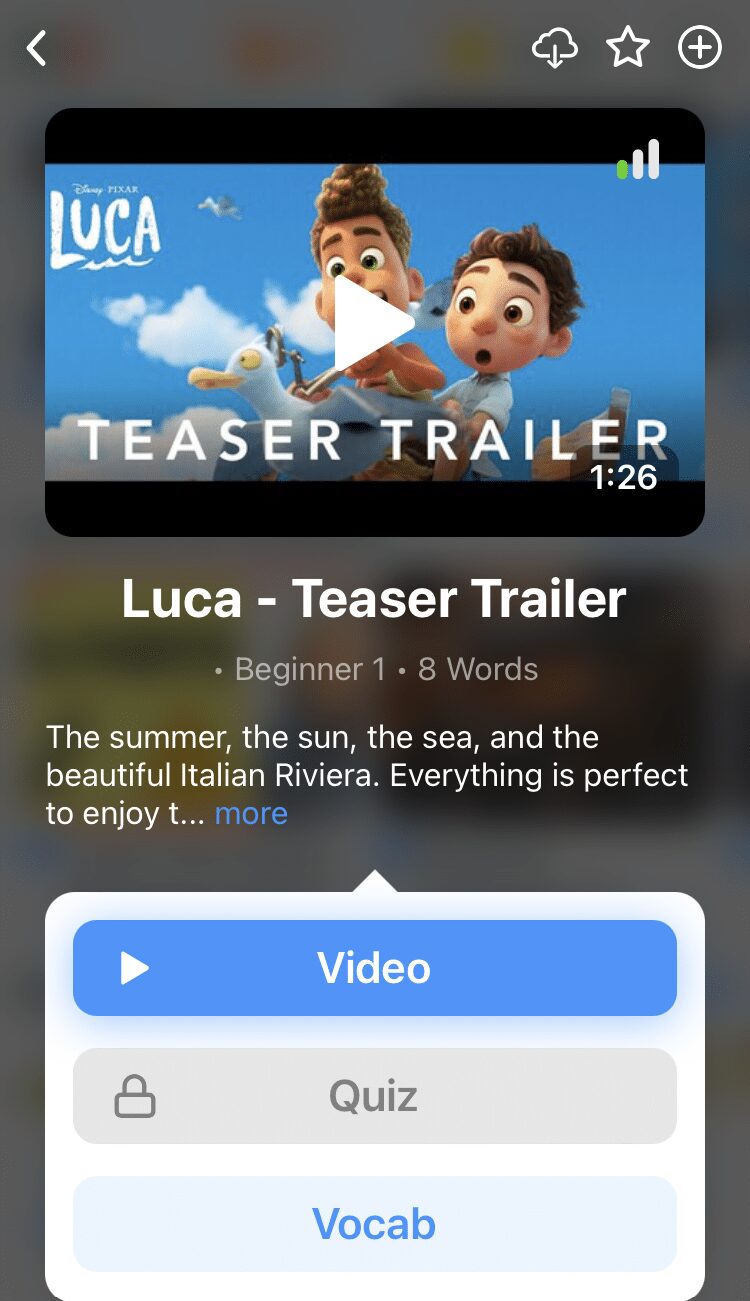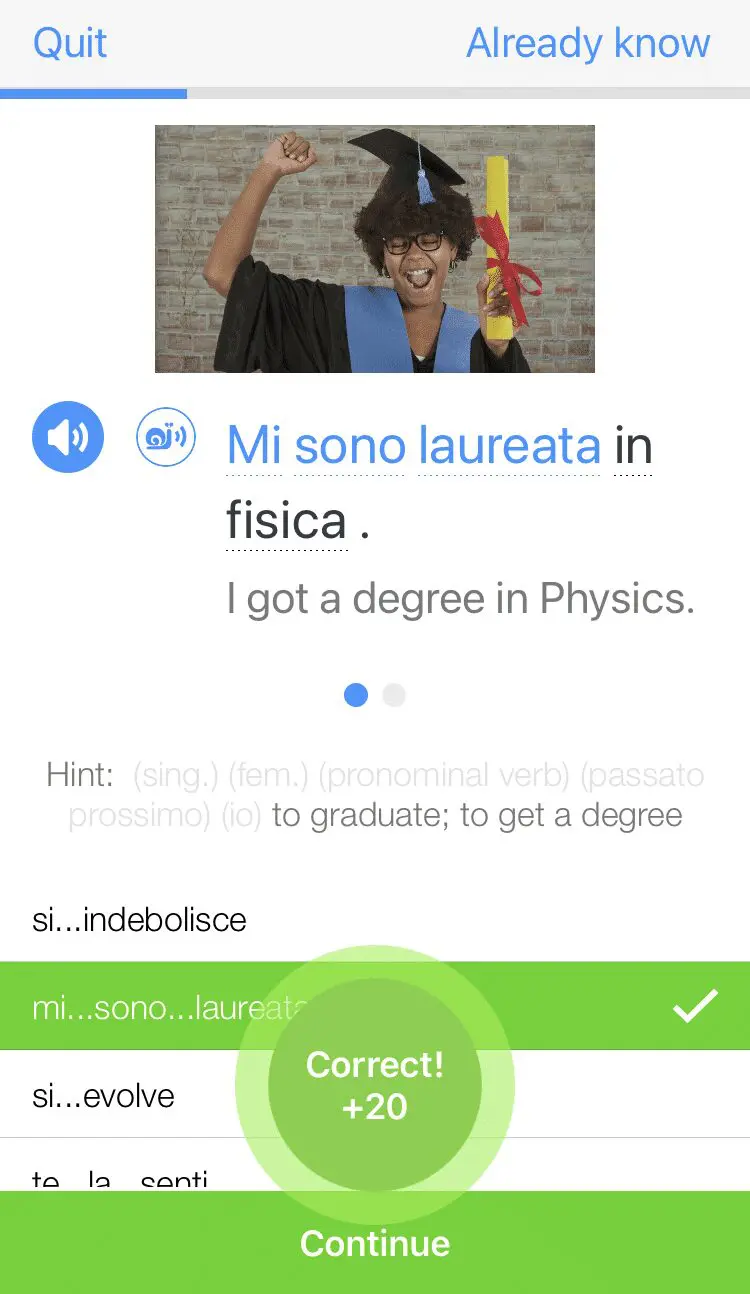18 Italian Tongue Twisters and Tips for Pronouncing Them

Italian has a lot of similar sounds, and getting a handle on pronouncing sounds like “glio” and “glia” can be difficult for learners. Tongue twisters can help you nail those tricky sounds. Italian tongue twisters (called scioglilingua in Italian) come in a range of difficulties that you can use to perfect your pronunciation and speed when speaking Italian.
Download: This blog post is available as a convenient and portable PDF that you can take anywhere. Click here to get a copy. (Download)
Easy Italian Tongue Twisters
Tre tigri contro tre tigri.
English version: Three tigers against three tigers.
This is one of the most famous Italian tongue twisters, probably because it’s so simple and silly. That doesn’t mean it’s easy to say. The sentence alternates between the “t” and “tr” sounds, and between the “e” and “i,” making it easy to trip up. You can also use this phrase to practice the Italian “r” sound, which many learners find hard to perfect.
Un limone, mezzo limone, due limoni, tre limoni.
English version: A lemon, half a lemon, two lemons, three lemons.
This short tongue twister helps you practice singular and plural pronunciations, switching from limone (singular) to limoni (plural) halfway through. The “eh” sound of the singular “e” changes to “ee” with the plural vowel “i.” It’s also a good way to remember some basic quantity vocabulary.
Figlia, sfoglia la foglia sfoglia la foglia, figlia.
English version: Daughter, flip the leaf flip the leaf, daughter.
Figlia (daughter) and foglia (leaf) both use the uniquely Italian sound “gli,” which is a tough sound for non-native Italian speakers to learn. It’s a palatal sound, similar to the Spanish double-l, and doesn’t really exist in English. You can make a similar sound by saying the word “million.” Keep a close eye on the “i” in figlia and the “o” in foglia as you say the tongue twister, too!
In un piatto poco cupo, poco pepe cape.
English version: In a dish not deep enough, not much pepper fits.
This fun tongue twister helps you practice pronouncing your “p” properly. There’s a small difference between the English and Italian pronunciation of the letter “p.” In English, you often aspirate (breathe out air as you speak), but in Italian, there’s no aspiration.
You can get a better idea of the sounds of Italian by listening to authentic Italians speaking—and you can do this on the FluentU program.
FluentU takes authentic videos—like music videos, movie trailers, news and inspiring talks—and turns them into personalized language learning lessons.
You can try FluentU for free for 2 weeks. Check out the website or download the iOS app or Android app.
P.S. Click here to take advantage of our current sale! (Expires at the end of this month.)
O postino che porti la posta, dimmi postino che posta portasti.
English version: Oh postman who brings the mail, tell me postman what mail you brought.
The challenge here is that the “o” is pronounced two ways.“O,” “por” and “no” use a closed “o” sound. This means that your mouth is narrowed when you pronounce it, like “oh” in English.
On the other hand, the “po” in postino (postman) and posta (mail) use an open “o.” With this pronunciation your mouth is open and the sound is similar to the word “spot.” You can warm up for this tongue twister by saying “o” repeatedly while changing the position of your lips.
A quest’ora il questore in questura non c’è.
English version: At this time the commissioner is not at the police station.
You’ll need to make sure you use the correct vowel sounds in the three similar-looking words, quest’ora (this hour), questore (commissioner) and questura (police station).
you can see, changing just one vowel completely changes the meaning of each word. The tongue twister also repeats the “qu,” which makes the sound “kw” like in the English word “quest.”
Li vuoi quei kiwi? E se non vuoi quei kiwi che kiwi vuoi?
English version: Do you want those kiwis? And if you don’t want those kiwis, what kiwis do you want?
Italian is certainly not the word offender in terms of stringing together vowels (here’s looking at you, French!). But it does have a few tricky vowel clusters, and this tongue twister provides a chance to practice some of them. Make sure you articulate the vowels in vuoi (you want) and quei (those). The trick is not to mix them up with each other or with the word “kiwi.”
Sopra la panca la capra campa, sotto la panca la capra crepa.
English version: Above the bench the goat survives, under the bench the goat dies.
Mind your p’s and k’s in this Italian tongue twister, which switches between the two sounds often enough to trip you up. Sopra (above) and capra (goat) also repeat the “pra” sound, while campa (lives) and crepa (dies) just have “pa.” Be careful not to add the “r” sound accidentally!
Intermediate Italian Tongue Twisters
Precipitevolissimevolmente.
English version: In the manner of someone who acts very hastily.
Clocking in at an impressive 26 letters, this word is officially considered to be the longest word in Italian. Its length has made it more of a gag word than a real one, and you’ll never find it in everyday use.
To pronounce it, try breaking it down into its components: precipitevole (hasty), -issimo (a suffix meaning “very), -evole (a suffix that denotes action) and -mente (a suffix that turns a word into an adjective). Phew!
Sotto le frasche del capanno, quattro gatti grossi stanno; sotto quattro grossi sassi, quattro gatti grossi e grassi.
English version: Under the boughs of the shack, four big cats stand; under four big stones, four big fat cats.
This tongue twister is the perfect practice for double consonants. Almost every word has double consonants in it, which helps you work on your emphasis. The double “n” and double “s” are held slightly longer than you’d pronounce a single letter. Think of it as an extra beat in the word.
For the double “t,” the stop is more pronounced than usual, with the finish being slightly more emphatic than normal.
Sa chi sa se sa chi sa che se sa non sa se sa, sol chi sa che nulla sa ne sa più di chi ne sa.
English version: He knows who knows if he knows who knows that if he knows he doesn’t know if he knows, only he who knows that he knows nothing knows more than he who knows.
This one is similar to the well-known English “Sally sells seashells,” since the difficulty is in the repetition. The sheer number of times you have to say “sa,” “se,” “che” and “chi” makes it hard to keep your sounds straight. It’s even difficult in English!
Keep track of your word order here to prevent the meaning from becoming completely jumbled. Begin by breaking the tongue twister into manageable segments. Start working on each segment slowly and deliberately so you can really get a handle on pronouncing the words.
Buonasera signorina, che bea sera che l’è stasera, se doman de sera l’è na bea sera come stasera che bea sera che l’è doman de sera.
English version: Good evening miss, what a beautiful evening this evening is, if tomorrow evening is a beautiful evening like this one, what a beautiful evening tomorrow evening will be.
This tongue twister is quite a nice sentence in general! What makes it really special, though, is that it’s in the Venetian Italian dialect. The focus of this sentence is the long “e” vowel and the “a” sound, which is pronounced like “ah.” There’s a rhythm to it, so the best way to learn it is to take it a couple of words at a time and find that rhythm. You could even tap your toes to keep yourself in time.
Una rara rana nera sulla rena errò una sera, una rara rana bianca sulla rena errò un po’ stanca.
English version: A rare black frog wandered on the sand one evening, a rare white frog wandered on the sand a little tired.
The way this tongue twister mixes up the word pattern with nearly every other word makes it hard to keep them in the correct order. It gives you a chance to practice your “r” sounds, but it also requires you to differentiate between “ll,” “rr” and “r.”
Hard Italian Tongue Twisters
Sul tagliere l’aglio taglia. Non tagliare la tovaglia. La tovaglia non è aglio. Se la tagli fai uno sbaglio.
English version: On the cutting board, the garlic is cut. Don’t cut the tablecloth. The tablecloth is not the garlic. If you cut it, you make a mistake.
In this tongue twister, we see “gli,” one of the most complicated sounds for Italian learners, and how it fits with other vowels. “Glie,” “glio” and “glia” all make an appearance here.
You can warm up for this sentence by saying “lyee-o,” “lyee-ah” repeatedly. Treat it like you would the tongue twister itself: Start slowly and try to gain speed. Not only will it loosen you up, but it’ll also make saying the full sentence much easier.
Quanti rami di rovere roderebbe un roditore se un roditore potesse rodere rami di rovere?
English version: How much wood would a woodchuck chuck if a woodchuck could chuck wood?
This one may seem familiar to you, as it’s a very popular tongue twister in English. The Italian version is helpful in establishing your “i” and “e” sounds. For example, quanti (how much) rami (wood; literally a tree branch) and di (of) all end with an “ea” sound, like the English word “sea.” This sentence also has both long “e” vowels and short “e” vowels.
The long “e,” like the “re,” “be” and “se” in rovere (wood; literally a type of tree), roderebbe (would gnaw) and potesse (could) are similar to the “ai” sound in the word “pair.”
The short “e,” however, such as the “de” in roderebbe, sounds more like “eh,” similar to the vowel sound in “ten.”
Trentatré trentini entrarono a Trento tutti e trentatré trotterellando.
English version: Thirty-three people from Trentino came into Trent, all thirty-three trotting and toddling.
This Italian tongue twister is one of the most popular ones you’ll find. It’s a great phrase to work on your “t” words. Particularly, it emphasizes the “tr” sound that comes up eight times. This also makes it great for learning to roll your “r,” a challenge for most Italian learners. Before you start working on this one, spend a short amount of time practicing your trill.
Guglielmo coglie ghiaia dagli scogli scagliandola oltre gli scogli tra mille gorgogli.
English version: Guglielmo grabs gravel from the rocks, hurling it over the rocks in a thousand gurgles.
For even more practice pronouncing the elusive “gli” sound, use this tongue twister. It shows up in almost every word!
Se l’arcivescovo di Costantinopoli si disarcivescoviscostantinopolizzasse, vi disarcivescoviscostantinopolizzereste voi come si è disarcivescoviscostantinopolizzato l’Arcivescovo di Costantinopoli?
English version: If the Archbishop of Constantinople were to unseat himself as Archbishop Viscostantinopolis, would you deseat yourself as Archbishop Viscostantinopolise himself as the Archbishop of Constantinople was unseated?
Okay, so this one’s a bit over the top. But if you can master this one, you’ll feel ready to tackle any aspect of the Italian language!
If you want to become fully fluent in Italian, you need to master not only the language itself but the speed of speech as well. One fun and easy way to work on speaking quickly is by practicing tongue twisters.
Soon, you’ll have people asking you to slow down!
And One More Thing...
If you're as busy as most of us, you don't always have time for lengthy language lessons. The solution? FluentU!
Learn Italian with funny commericals, documentary excerpts and web series, as you can see here:

FluentU helps you get comfortable with everyday Italian by combining all the benefits of complete immersion and native-level conversations with interactive subtitles. Tap on any word to instantly see an image, in-context definition, example sentences and other videos in which the word is used.

Access a complete interactive transcript of every video under the Dialogue tab, and review words and phrases with convenient audio clips under Vocab.

Once you've watched a video, you can use FluentU's quizzes to actively practice all the vocabulary in that video. Swipe left or right to see more examples of the word you’re on.

FluentU will even keep track of all the Italian words you’re learning, and give you extra practice with difficult words. Plus, it'll tell you exactly when it's time for review. Now that's a 100% personalized experience!
The best part? You can try FluentU for free with a trial.
Start using the FluentU website on your computer or tablet or, better yet, download the FluentU app from the iTunes or Google Play store. Click here to take advantage of our current sale! (Expires at the end of this month.)








